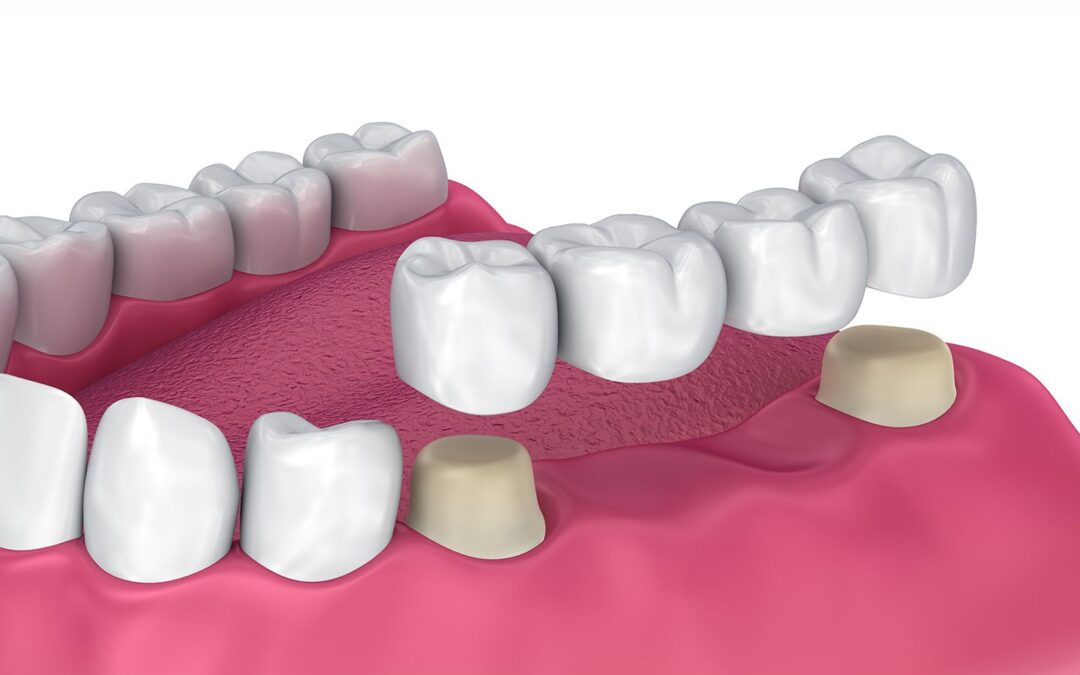Dental Bridge
When you lose teeth, it can feel like people only see gaps when you smile or that you can’t eat as well. For many people with missing teeth, this can make them avoid smiling altogether and prevent them from enjoying their favorite foods. If you feel like you try to avoid smiling because you have missing teeth, it’s important to keep in mind that you have options for restoration– and that your dentist can help.
Along with affecting the appearance of your smile, a missing tooth (or multiple missing teeth) can cause movement of neighboring teeth in the mouth, disturbing your bite’s delicate equilibrium. Along with this, it can make it more difficult to effectively clean your mouth and gums if you have gaps or shifted teeth. If you’re suffering from missing teeth, a dental bridge is a fairly quick and excellent option for restoring your smile and your confidence by using the latest technologies and techniques.
A bridge fills the space in your mouth where teeth are missing, essentially “bridging” the gap and restoring health and function to your smile without the need for surgery. Using the teeth on either side of your missing tooth, a bridge holds the replacement tooth in place to prevent further shifting and to maintain the completeness of your smile. Bridges can be completed in as little as 2-3 weeks, making them low-hassle and easy to manage. Dr. Guthrie and Dr. Eberle offer dental bridges and other restorative options for your smile.
Types of Dental Bridges
Traditional Dental Bridges
When you have natural teeth on both sides of the missing tooth, then a traditional bridge is your best option. Traditional dental bridges are the most common type of bridge used for restoration. They usually consist of one or more pontics (spacer teeth) and are held in place using dental crowns. These crowns are called abutments and are cemented onto the natural teeth around the gap to hold the bridge in position.
Cantilever Bridges
These dental bridges are similar to traditional bridges; however, the pontic is solely supported on one side by an abutment rather than on both sides. This option is ideal for people who only have one natural tooth next to the gap.
Maryland Bridges
Maryland dental bridges are an alternative option to traditional bridges that do not use crowns. Instead, the bridge is made of a pontic that is held in position by either a porcelain or metal framework. The framework is bonded to the backs of the adjoining teeth next to the gap.
Implant-Supported Bridges
These are the most advanced methods of replacing missing teeth. Implant-supported bridges are a good option when you have one or more missing teeth. These dental devices are supported by implants rather than crowns or frameworks. Since these bridges are secured by dental implants, they feel comfortable and are much like a natural tooth. Two procedures are required for dental bridges supported by implants. The first step is performed by an oral surgeon to place the implants. After a recovery period of 3-6 months, the second procedure is performed where the bridge is placed. Though this may seem like a lengthy process, the results are permanent and natural-looking.
Do I Need a Dental Bridge?
If you have a missing tooth or several missing teeth in a row, a dental bridge may be the best option for you. In addition to serving as a cosmetic procedure to improve the appearance of your teeth, dental bridges are beneficial for the health of your surrounding teeth. The bridge prevents your natural teeth from shifting or facing damage due to improper bite. However, if the surrounding teeth are damaged, infected, or decayed, they may not adequately support the bridge and another procedure, such as a root canal or dentures, may be better suited to you. Dr. Guthrie and Dr. Eberle are experts in dental bridges and will be able to determine if this is the best procedure for you.




